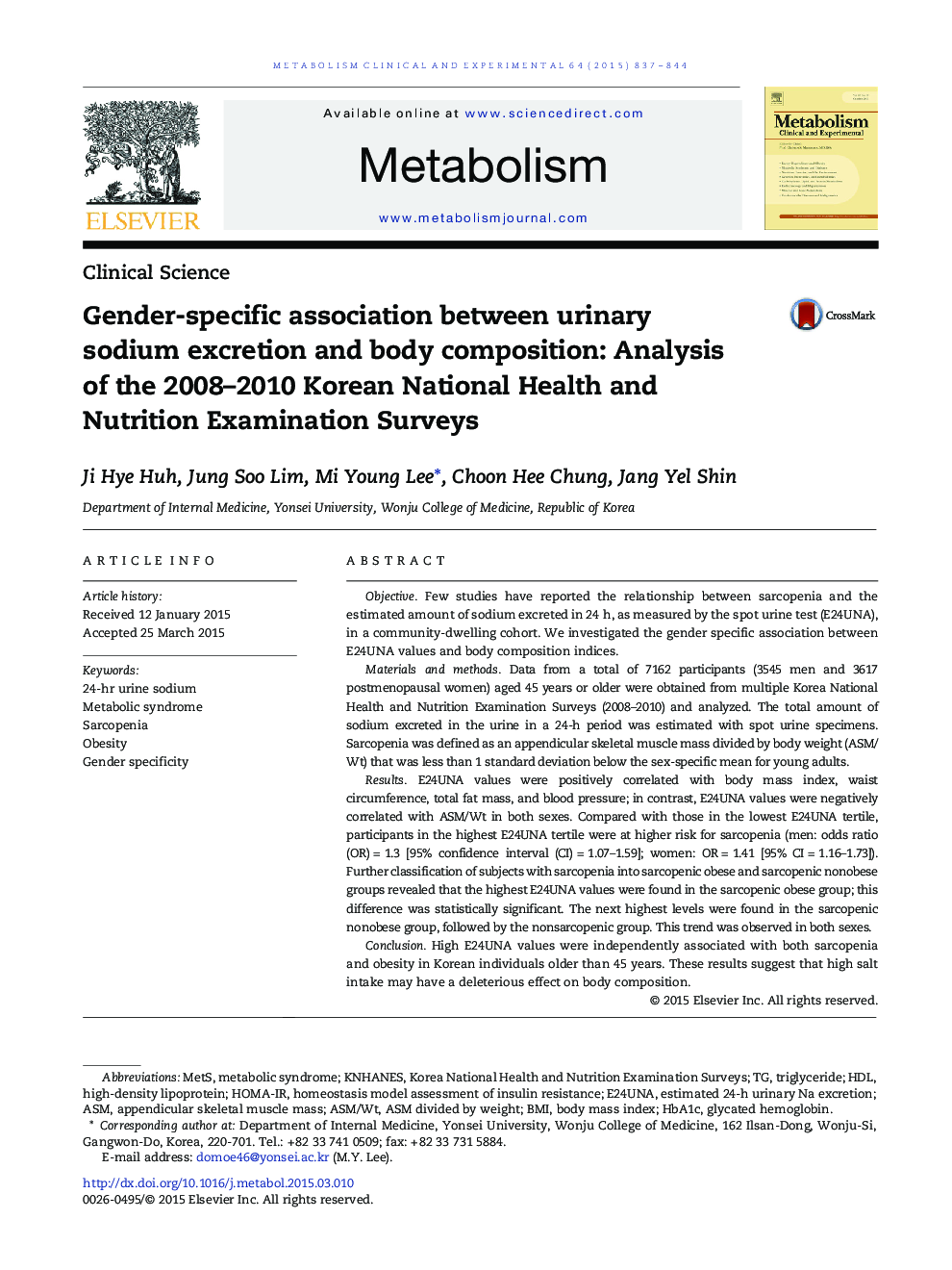| Article ID | Journal | Published Year | Pages | File Type |
|---|---|---|---|---|
| 2805657 | Metabolism | 2015 | 8 Pages |
ObjectiveFew studies have reported the relationship between sarcopenia and the estimated amount of sodium excreted in 24 h, as measured by the spot urine test (E24UNA), in a community-dwelling cohort. We investigated the gender specific association between E24UNA values and body composition indices.Materials and methodsData from a total of 7162 participants (3545 men and 3617 postmenopausal women) aged 45 years or older were obtained from multiple Korea National Health and Nutrition Examination Surveys (2008–2010) and analyzed. The total amount of sodium excreted in the urine in a 24-h period was estimated with spot urine specimens. Sarcopenia was defined as an appendicular skeletal muscle mass divided by body weight (ASM/Wt) that was less than 1 standard deviation below the sex-specific mean for young adults.ResultsE24UNA values were positively correlated with body mass index, waist circumference, total fat mass, and blood pressure; in contrast, E24UNA values were negatively correlated with ASM/Wt in both sexes. Compared with those in the lowest E24UNA tertile, participants in the highest E24UNA tertile were at higher risk for sarcopenia (men: odds ratio (OR) = 1.3 [95% confidence interval (CI) = 1.07–1.59]; women: OR = 1.41 [95% CI = 1.16–1.73]). Further classification of subjects with sarcopenia into sarcopenic obese and sarcopenic nonobese groups revealed that the highest E24UNA values were found in the sarcopenic obese group; this difference was statistically significant. The next highest levels were found in the sarcopenic nonobese group, followed by the nonsarcopenic group. This trend was observed in both sexes.ConclusionHigh E24UNA values were independently associated with both sarcopenia and obesity in Korean individuals older than 45 years. These results suggest that high salt intake may have a deleterious effect on body composition.
